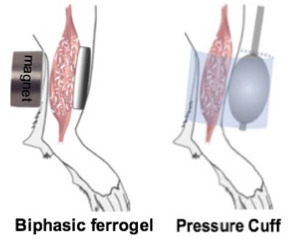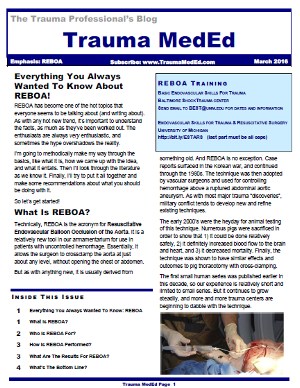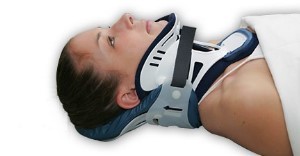A set of guidelines for management of blunt solid organ injury in children developed by the American Pediatric Surgical Association was originally published in 1999. One of the elements of the guideline was to place the child on bedrest for a period of time after the injury. Arbitrarily, this period was defined as the injury grade plus one day. So for a grade 3 spleen injury, the child would have to stay in bed for 4 days (!).
A paper published in 2013 looked at the impact of shortening this time interval. Over a 6 year period, all pediatric liver and spleen injuries from blunt trauma were identified and an abbreviated bedrest protocol was implemented. For low grade injuries (grade 1-2), children were kept in bed for 1 day, and for higher grade injuries this was extended to 2 days.
Here are the factoids:
- 249 patients were enrolled (about 40 per year) with an average age of 10. “Bedrest was applicable for 199 patients, 80%.” Huh? Does that mean that 50 patients were excluded due to surgeon preference?
- The organ injured was about 50:50 for spleen vs liver. Twelve children injured both.
- Mean injury grade was 2.7, which is fairly high
- Mean bedrest was 1.6 days, and mean hospital stay was 2.5
- Bedrest was the limiting factor for hospital stay in 62% of cases
- There were no delayed complications of the injury
Bottom line: Come on! Most centers don’t keep adult patients at bedrest this long, and we learned about solid organ injury management from kids! Children almost never fail nonop management, so why treat them more restrictively than adults? And have you ever tried to keep a child at bedrest? Impossible! This study is too underpowered to give real statistically valid results, but it certainly paints a good picture of what works. We recently updated our adult and pediatric protocols to eliminate bedrest and npo status. Let’s get rid of these anachronisms once and for all!
Reference: Follow up of prospective validation of an abbreviated bedrest protocol in the management of blunt spleen and liver injury in children. J Ped Surg 48(12):2437-2441, 2013.





